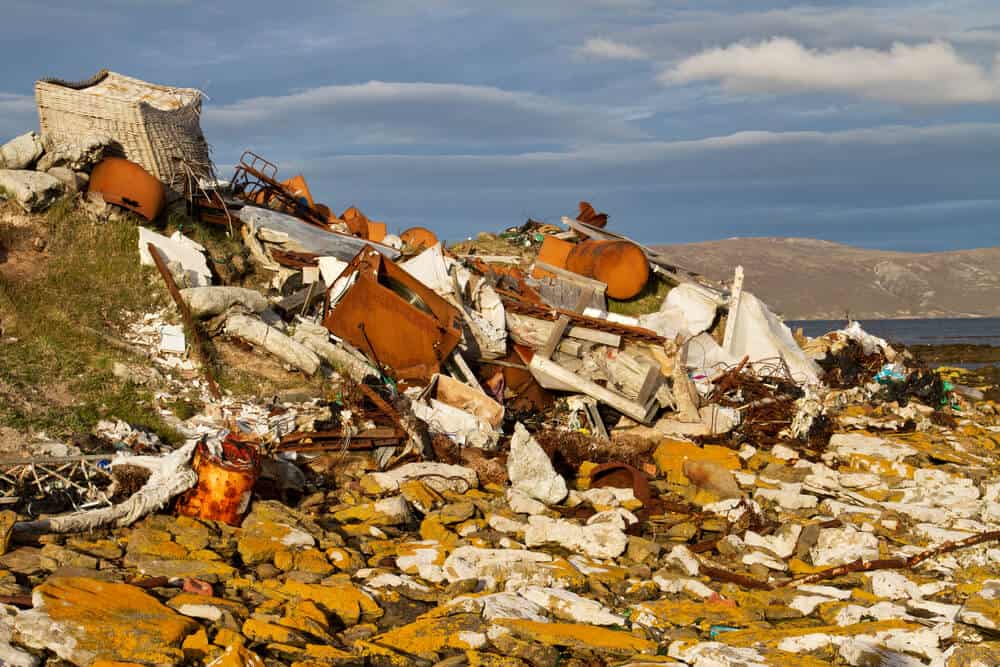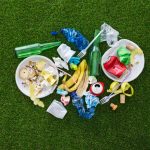With the constant onslaught of new terms invented both to describe environmental problems and solutions and to market products to those concerned about the environment, it is challenging to navigate the proper waste management channels for different products.
Fortunately, with a bit of research, you can learn enough about these terms and issues to make educated decisions for your household.
The key to getting rid of non-biodegradable waste is to eliminate it as much as possible.
If you are concerned about your own use of non-biodegradable products, replace single-use dishware and other convenience items with long-term solutions that can be cleaned, repaired, and reused.
Otherwise, make sure that you keep your non-biodegradables sorted properly between garbage and recycle bins and make sure they make it to the proper facilities.
With so many eco-friendly and biodegradable packaging labels in stores, there’s little to no public focus on properly disposing of those items without special labeling.
As a result, we use these non-degradable items knowingly because we don’t know what other options are available.
Many still lack a proper understanding of how these items are disposed of once they leave our homes.
What Is Non-Biodegradable Waste?
LawInsider’s dictionary defines Non-biodegradable waste as any waste that cannot undergo anaerobic or aerobic decomposition and therefore can not be degraded by microorganisms into simpler, stable, and natural compounds such as humus.
Unfortunately, waste that falls under this category stays around for hundreds to thousands of years after use and is a massive detriment to our planet.
The increasing problems associated with municipal waste management of non-biodegradable items are primarily responsible for several socio-economic movements of our time.
Popular movements initiated by those who are the most concerned with our planet’s future include Freeganism, Upcycling, and many others focused on cutting back on resource exhaustion.
What Is The Difference Between Biodegradable and Non-Biodegradable?
Having just discussed the definition and common examples of non-biodegradable waste, you should have a good grasp of the types of waste associated with the term.
Biodegradable waste, on the other hand, is essentially the exact opposite of non-biodegradable waste.
Meaning, biodegradable waste can be broken down or degraded by microorganisms naturally occurring in nature.
However, a common misconception surrounding biodegradable waste is that it disappears from the environment with little to no harmful effect in a very short time.
This simply is not true.
Even biodegradable food waste that you might expect to break down immediately takes months to degrade in ideal natural conditions for decomposition and can cause disease and illness.
What Are Some Examples Of Non-Biodegradable Waste?
Whether you recognize them for what they are or not, you most likely use dozens of non-biodegradable items daily.
So drawing a blank, or not sure which items you own are non-biodegradable? That’s okay, it is a common problem for consumers, and you are not alone in your lack of surety.
Non-biodegradable waste products that you can recycle are known as recyclable waste. Non-biodegradable waste that can not be recycled is known as non-recyclable waste.
These terms help differentiate which disposal methods you’ll use for different non-biodegradable items.
Here are some examples of everyday non-biodegradable waste products-
- Single-use plastic dishware
- Other single-use plastic products such as mouth hygiene accessories or containers
- Batteries
- Computer parts and other electronic devices
- Glass
- Metals
Some of these waste products are recyclable or possible to upcycle or reclaim, including computer and electronic parts, metals, some glass, and some batteries.
However, single-use products, plastics in particular, typically can not be recycled or reused in any way due to their soiled nature.
Any waste that has come in contact with bodily fluids/waste, food, or chemicals is considered soiled and is not processable.
How Does Non-Biodegradable Waste Affect The Environment?
Non-biodegradable waste, especially blatant littering, is considered the most damaging influencing factor in our worldwide crisis with waste management and trash pollution.
These materials make their way into our oceans, rivers, and lakes, as well as our forests and farmlands.
Non-biodegradable plastic products are at the top of the list of offenders.
More than 8 million tons of plastic waste make their way into our oceans each year.
This plastic then breaks down over time into microplastics, which we are still studying the long-term effects of.
Additionally, non-biodegradable waste takes away from the natural beauty of our world.
Waste products that take thousands of years to break down make it unpleasant or undesirable to travel to locations that struggle to manage their massive amounts of non-biodegradable waste that continues to grow daily.
Eco-Friendly Ways To Reduce Non-Biodegradable Waste At Home
Fortunately, there are some ways that you can combat the levels of non-biodegradable waste leaving your home on a daily or weekly basis! Some of our top tips include-
- Stop using disposable wraps and bags in the kitchen and replace them with reusable alternatives
- Pick up reusable canvas bags to replace non-biodegradable plastic shopping bags
- Choose the bulk option when buying items that you usually pick up as single-serving options and pack portions in reusable bags for on-the-go food
- Invest in insulated bottles that you can carry hot or cold beverages in to replace single-use cups and enjoy beverages even more
These are just some of our favorite ideas to cut down on waste. You can probably look around your home and determine other areas where you can apply similar concepts to cut down on waste.
How To Get Rid Of Non Biodegradable Waste Responsibly
Are you unsure of how to get rid of non-biodegradable waste properly? If so, there’s a simple solution- check with your local recycling and waste management facilities to find out what you can recycle locally and what items can go to special departments that focus on repurposing and repairing items such as electronics, computers, textiles, or chemicals.
While many areas do not have the resources needed to divide non-biodegradable waste up appropriately to cut down on unnecessary landfill waste, it never hurts to check to see what options your community offers.
After all, new programs and equipment are regularly implemented to supplement the existing waste management system all of the time.



